 2018 CBECS: Principal Building Activities
2018 CBECS: Principal Building Activities
Mercantile
Mercantile buildings are used for the sale and display of goods other than food.
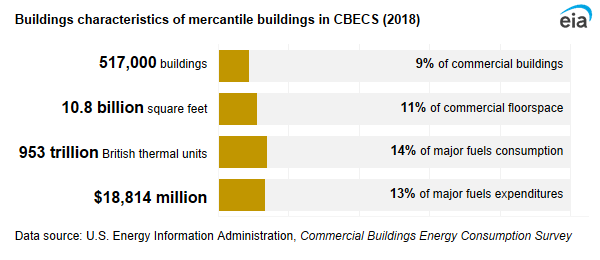
We publish four subcategories of mercantile buildings:
- Retail store
- Other retail, which includes liquor stores, rental centers, and studios or galleries
- Strip shopping center (has separate exterior entrances for each establishment)
- Enclosed mall (often anchored by one or more department stores and has interior walkways or common areas)
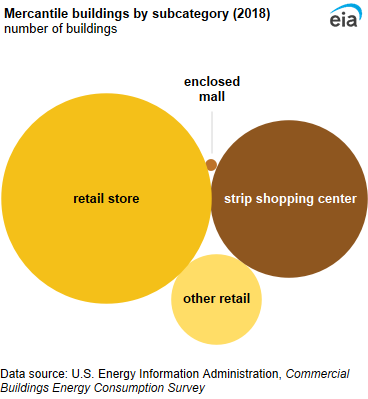
Retail stores (57%) were the most common mercantile building, followed by strip shopping centers (32%) and other retail (11%). Enclosed malls made up less than 1% of all mercantile buildings.
The majority (83%) of mercantile buildings were less than 25,000 square feet. On average, mercantile buildings were 20,900 square feet per building, but the average differs greatly when considering the building subcategory. On average, retail stores were 15,200 square feet per building, other retail was 12,900 square feet per building, and strip shopping centers were 29,600 square feet per building. Enclosed malls, although few, were significantly larger at 727,800 square feet per building.
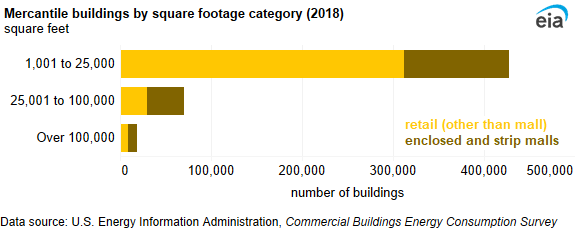
More than one-half (55%) of mercantile buildings have only one establishment. Another 29% of mercantile buildings housed two to five establishments.

Energy use in mercantile buildings
Mercantile buildings used 953 trillion British thermal units (TBtu) of energy in 2018. Although mercantile buildings accounted for 11% of total commercial floorspace, these buildings accounted for 14% of energy consumption in commercial buildings. Electricity was the most-used fuel (616 TBtu), followed by natural gas (334 TBtu). Although enclosed malls and strip shopping centers accounted for about one-third of mercantile buildings, these buildings accounted for most of the energy consumption. Enclosed malls and strip shopping centers accounted for 61% of electricity consumption and 74% of natural gas consumption in mercantile buildings.
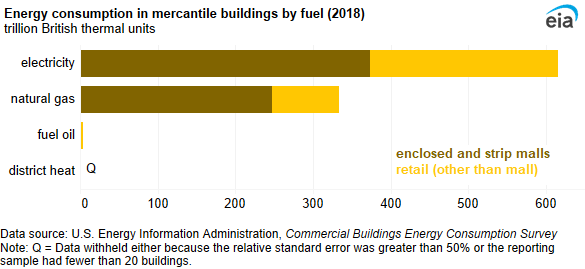
Although energy intensity in mercantile buildings averaged 88.4 thousand British thermal units (MBtu) per square foot, the intensities differed between enclosed malls and strip shopping centers and retail (other than mall) buildings. Enclosed malls and strip shopping centers consumed 111.0 MBtu per square foot, and retail (other than mall) buildings consumed 64.1 MBtu per square foot.

Space heating accounted for the largest share of end-use consumption for both enclosed malls and strip shopping centers (25%) and retail (other than mall) buildings (24%). Enclosed malls and strip shopping centers had a larger share of consumption dedicated to cooking (13%), and retail (other than mall) had larger shares of consumption dedicated to ventilation (18%).
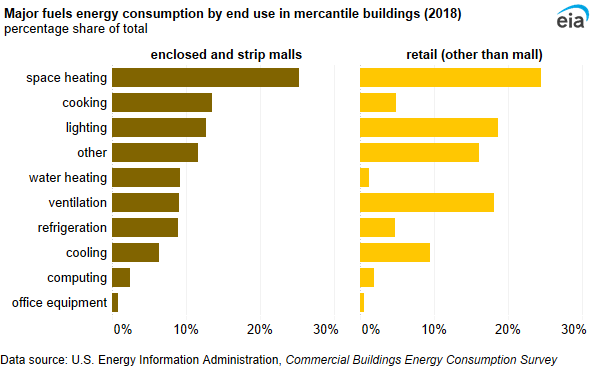
Although space heating accounted for the largest share of end-use consumption for both enclosed malls and strip shopping centers and retail (other than mall) buildings, the space heating energy intensity for enclosed malls and strip shopping centers (28.5 MBtu per square foot) was almost two times higher than the retail (other than mall) intensity (16.5 MBtu per square foot).
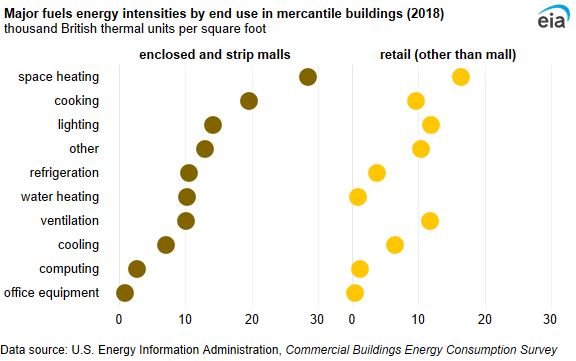
Inside mercantile buildings
Packaged heating units were used in 70% of mercantile buildings. Furnaces (34%) and individual space heaters (24%) were the second- and third-most-used heating equipment.
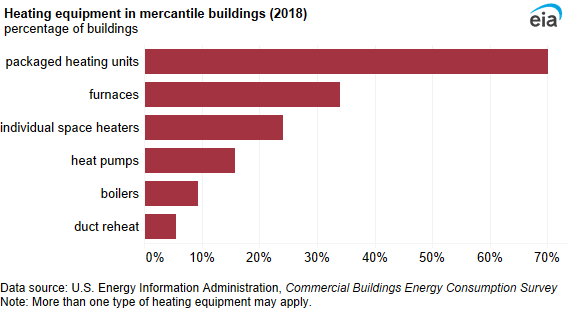
Packaged air conditioners were used in 74% of mercantile buildings. The second-most-used cooling equipment was residential-type central air conditioners (21%).
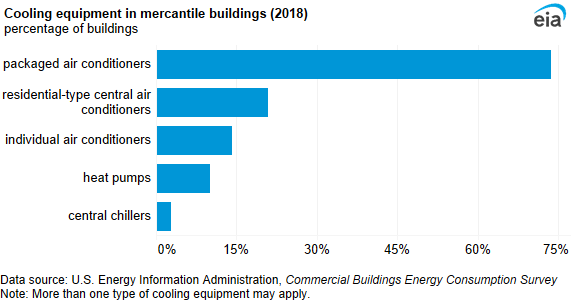
More mercantile buildings had at least one desktop computer (88%) than had at least one point-of-sale device or cash register (73%). Both laptops and televisions or video displays were present in 56% of mercantile buildings.
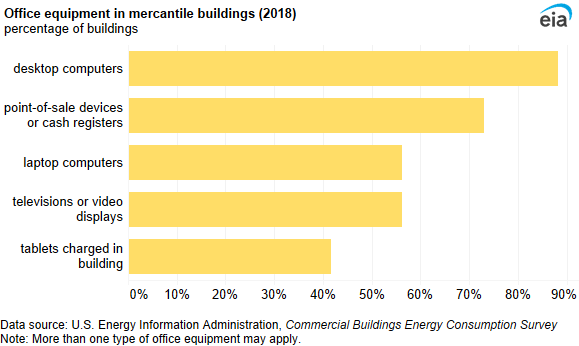



 /p>
/p>